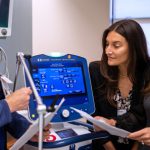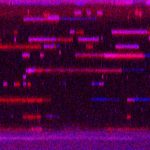Researchers at the University of Pittsburgh School of Medicine and Virginia Tech have developed a technique to study the complex and dynamic mechanical interactions between cells that make up blood vessels and the fibrous extracellular matrix that surrounds these cells. The findings, which could help us better understand the biology of aortic disease, were published in a special “Forces” issue of the journal Molecular Biology of the Cell, flagship journal of the American Society of Cell Biologists (ASCB).
Smooth muscle cells are muscle cells present in the walls of blood vessels undergo periodic expansion and contraction. The complex force signatures arising from this involve the interplay between the innate contractility of the cells and the forces exerted upon the cell by fibrous extracellular matrix, which structurally and functionally support these cells. To understand disease manifestation and progression, it is vitally important to study the forces and their disruption in disease.
Julie Phillippi, Ph.D., an assistant professor in Pitt’s Department of Cardiothoracic Surgery and affiliated with the McGowan Institute for Regenerative Medicine studies the matrix and cell forces in blood vessel smooth muscle cells as a window to understanding aortic disease. The aorta, the largest artery in the body, carries oxygen-rich blood pumped out by the heart. Cardiovascular disease caused by high cholesterol for example, can result in a hardening and narrowing of the aorta.
“The key idea behind our study is to show that disease mechanisms might be detectable at the single cell level,” said Phillippi.
To understand the role of biomechanical forces in aortic disease, it is important to understand the forces exerted and felt by cells simultaneously. Dr. Phillippi teamed up with her collaborator Amrinder Nain, Ph.D., an associate professor of mechanical engineering at Virginia Tech, who had built a device to do just that. The method, called nanonet force microscopy (NFM), utilizes extracellular mimicking fibers, which allows researchers to interrogate what cells experience in the body while also measuring individual cellular forces with a high level of precision.
The two researchers worked in neighboring labs as post-doctoral scholars at Carnegie Mellon University in Pittsburgh and continued their scientific collaboration even after taking up faculty positions at Pitt and Virginia Tech. It only seemed fitting then, that Phillippi, the biologist and Nain, the mechanical engineer teamed up to solve this important biomechanical problem.
Together, they used the state-of-art nanofiber technology pioneered previously by Nain to develop a new force measurement platform which combined extracellular matrix mimicking fibers into a scaffold on which muscle cells could be grown.
By altering the conditions of the matrix, such as fiber diameter, density and spacing, or introducing an external force, NFM allowed them to understand how cells respond to the multitude of forces that they experience within tissues. “Everything in nature exerts and experiences a physical force,” said Nain. “This platform measures both simultaneously.”
“It was a truly interdisciplinary effort involving basic scientists, engineers and clinicians at the faculty and trainee level that allowed us to develop and utilize this unique tool. NFM is the first platform of its kind that that can measure single cell-fiber forces both under passive conditions and in the presence of disease conditions,” said Phillippi.
Phillippi and Nain used cells from healthy individuals in the current study, but in the future, they plan to take advantage of the large repository of patient samples from healthy and diseased individuals established by Dr. Thomas Gleason, Chief of the Division of Cardiac Surgery at Pitt, to determine force signatures for different types of cells in blood vessels under various conditions.
While her work is focused on aortic disease, Phillippi noted that the technique has much broader applications as it represents a new method of disease modeling that could be built into drug testing platforms in the future.








